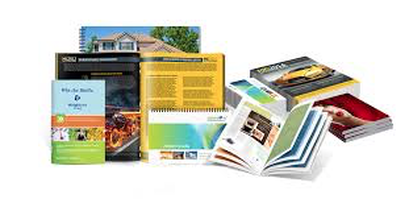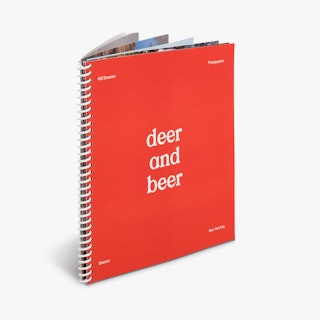Exploring Creative Layouts in Professional Booklet Printing
Exploring Creative Layouts in Professional Booklet Printing
Blog Article
The Important Guide to Understanding Booklet Printing Options and Techniques
The process of pamphlet printing includes multiple factors to consider that can considerably affect the end product. From selecting the suitable format and dimension to recognizing the nuances of binding approaches, each option plays a necessary role. Furthermore, variables such as paper supply and printing strategies more influence the efficiency of the pamphlet. As one browses these alternatives, it ends up being crucial to understand just how they adjoin and what that implies for the general result.
Understanding Pamphlet Sizes and styles
When taking into consideration booklet printing, recognizing the different layouts and sizes offered is essential for attaining the preferred presentation. Pamphlets can be generated in many formats, consisting of saddle-stitched, spiral-bound, and perfect-bound, each offering distinctive benefits. Typical dimensions range from conventional letter (8.5 x 11 inches) to smaller alternatives like A5 (5.8 x 8.3 inches), permitting for versatility based on web content and target audience.Selecting the suitable dimension can influence both the format and visitor involvement. Larger sizes may fit aesthetically driven web content, while smaller formats might be more mobile and easy to use. In addition, the variety of pages influences the option of binding approach, as thicker booklets may require tougher bindings. Eventually, recognizing these elements permits an extra customized approach, making certain that the end product straightens with the desired message and aesthetic, enhancing the overall efficiency of the communication.
Picking the Right Paper Supply

Binding Techniques: Choices and Considerations
When it comes to binding techniques for booklets, several options are available, each with distinctive benefits. Saddle stitch binding offers an affordable remedy for thinner pamphlets, while best binding techniques give a more polished search for thicker publications. Wire-O binding stands out for its longevity and simplicity of use, making it suitable for files that need versatility.
Saddle Stitch Binding
Saddle stitch binding provides a cost-effective and functional solution for putting together booklets, making it a popular option among organizations and authors. This binding method entails folding sheets of paper in half and stapling them along the fold line, creating a orderly and cool appearance. Usually suitable for brochures with a lower page count, saddle sewing is optimal for magazines, brochures, and educational products. The simpleness of this strategy enables quick production and is frequently preferred for marketing products or brief runs. However, it is vital to note that saddle stitch binding may not appropriate for thicker brochures, as the spine may not hold up under boosted weight. Overall, it stays a trusted option for numerous printing projects.
Perfect Binding Techniques
Perfect binding is a widely utilized technique that offers a refined and specialist finish to magazines and booklets. This approach involves gluing the pages together at the spine making use of a strong adhesive, permitting a clean edge and the capability to hold a bigger number of pages contrasted to saddle sewing. Perfect binding is particularly ideal for thicker pamphlets, such as catalogs and yearly records, where a sturdy, flat spine is wanted. Additionally, it uses the choice for a printed cover that can be designed to improve visual appeal. Considerations such as page count, paper weight, and the planned usage of the brochure should be taken into account, as they can affect longevity and general high quality.
Wire-O Binding Alternatives
Wire-O binding, understood for its sturdiness and adaptability, provides a superb choice for booklets that need simple page transforming and a specialist appearance. This binding method employs a series of steel loopholes that hold web pages securely, enabling them to exist level when open. It is specifically appropriate for presentations, manuals, and directories as a result of its robust nature. Wire-O binding is available in numerous colors and diameters, accommodating various page counts and densities. In addition, it allows the addition of tabs and covers, boosting the brochure's overall aesthetic. Considerations for Wire-O binding include the option of wire shade, the dimension of the loops, and the degree of personalization preferred, every one of which can greatly affect the end product's appearance and capability.
Digital vs. Offset Printing: Which Is Best for You?
When selecting a printing approach for pamphlets, comprehending the distinctions between electronic and balance out printing is crucial. Digital printing uses modern-day technology to create high-quality prints promptly and economically, making it optimal for short runs or projects needing quick turnaround times. It permits for personalization, supplying the capability to print on-demand with marginal waste.In comparison, balance out printing is a typical method that masters creating big amounts with constant high quality. It involves moving ink from a plate to a rubber blanket, after that to the paper, which leads to vibrant shades and specific information. Nonetheless, offset printing typically needs longer setup times and is much more affordable for bigger volumes.Ultimately, the choice between digital and balance out printing depends upon job requirements, budget plan, and desired amount. For tiny, time-sensitive jobs, electronic could be the best selection, while countered might be more effective for bigger, high-grade productions.

Designing Your Booklet: Tips and Finest Practices
When making a pamphlet, cautious attention to layout, font style selection, and shade usage can substantially improve its effectiveness. A well-structured layout guides the viewers's eye, while suitable fonts assure readability and share the desired tone. Additionally, effective use shade can stimulate feelings and emphasize key information, making the overall style extra impactful.
Selecting the Right Design
Just how can one efficiently pick the ideal layout for a pamphlet? It is crucial to examine the pamphlet's purpose and target audience. A clean, arranged design boosts readability and involvement. Making use of a grid system can assist in lining up elements consistently, creating a specialist look. Additionally, integrating aesthetic power structure with differing dimensions and positionings of photos and text can direct the visitor's eye and highlight essential info. It is likewise important to leave adequate white area, which protects against overcrowding and allows for much better emphasis. Evaluating different formats via mock-ups can provide insight right into exactly how the layout does in real-world circumstances, making sure that the final item satisfies both practical and aesthetic needs. Useful Selecting Appropriate Typefaces
A well-chosen typeface can significantly improve the general style of a booklet, matching the format and reinforcing the content's message. The choice of font styles need to consider readability, particularly for body text, as it assures the details is available to all readers. Sans-serif typefaces are usually liked for digital formats, while serif fonts can offer a typical feel in printed products. It's a good idea to restrict font options to 2 or 3 to preserve visual comprehensibility. Furthermore, typeface dimension plays a crucial duty; headings ought to be not overwhelming yet distinct, while body message must wikipedia reference fit for analysis. When picking fonts, alignment with the pamphlet's theme and target market is vital for reliable interaction and aesthetic charm.
Reliable Usage of Shade
Shade works as a powerful tool in booklet layout, leading and shaping assumptions reader feelings. It can stimulate feelings of trust, exhilaration, or calmness, relying on the tones selected. Developers ought to think about color theory concepts, making sure that the chosen palette straightens with the pamphlet's message and target audience. For example, making use of cozy shades like red and orange can develop urgency, while cooler tones like green and blue foster tranquility.Additionally, contrast plays an important function; complementary colors can enhance readability and aesthetic allure. Consistency in shade use throughout web pages further strengthens brand identity and communication. Eventually, efficient shade implementation not only captures focus but also enhances the pamphlet's function, making it a crucial aspect of successful style.
Ending Up Touches: Coatings and Special Impacts
While several think about the content and format of a brochure one of the most important components, the finishing touches, such as coverings and special results, play a vital function in enhancing its total allure. Coatings can give protection and resilience, making certain that the pamphlet stands up to wear and tear. Matte surfaces offer a sophisticated, non-reflective surface area, while shiny layers can make shades appear more vibrant and distinctive. Special results, like embossing or foil marking, add a tactile dimension that can produce a memorable impression. These strategies can highlight details locations, drawing interest to crucial info or producing visual passion. Additionally, UV finish can offer a high-shine finish that elevates the total look.Together, these ending up touches not only boost the booklet's aesthetic however likewise communicate professionalism and interest to detail, inevitably leaving a lasting effect on the reader.
Expense Considerations for Pamphlet Printing
Recognizing the various price factors to consider for brochure printing is necessary for organizations and organizations aiming to optimize their budget plans. Trick factors affecting prices consist of the option of paper, ink, and binding methods. Better products, such as superior paper or specialized inks, commonly boost the total expense. Furthermore, the dimension and web page matter of the brochure play a significant duty; bigger pamphlets require more resources and time to produce.Another essential factor to consider is the printing technique, whether digital or balanced out, as each has its own prices structure and viability for different quantities. Organizations must also consider layout prices, which can vary based upon intricacy and making use of specialist services. Eventually, shipping and handling costs can include in the total, especially for big orders. By assessing these aspects, companies can make enlightened choices that straighten with their financial capabilities while achieving the preferred top quality in their published materials.
Regularly Asked Questions
What Are the Environmental Influences of Booklet Printing?
The ecological effects of brochure printing include deforestation from paper production, carbon emissions from transport, and waste generation from disposed of materials - Booklet Printing. Lasting techniques, such as utilizing recycled paper and environmentally friendly inks, can mitigate these results
How Can I Guarantee Shade Precision in My Pamphlet?
To guarantee shade accuracy in a booklet, one need to make use of adjusted displays, utilize professional shade accounts, conduct examination prints, and choose high-quality printing solutions that use shade matching and proofing options for finest results.
What Is the Regular Turn-around Time for Brochure Printing?
The normal turnaround time for brochure printing varies depending upon the intricacy and amount - Booklet Printing. Usually, it varies from a few days to 2 weeks, influenced by aspects such as publishing approaches and ending up demands
Are There Minimum Order Quantities for Pamphlet Printing?

Can I Print Pamphlets in Multiple Languages?
Publishing booklets in several languages is feasible. Lots of printing services offer choices for multilingual or multilingual layouts, permitting for reliable interaction. Mindful preparation guarantees that make components accommodate various languages without endangering readability or aesthetic appeals. Furthermore, variables such as paper stock and printing techniques further affect the efficiency of find the booklet. When thinking about pamphlet printing, comprehending the Full Article various layouts and dimensions available is essential for achieving the wanted discussion. When choosing a printing method for pamphlets, recognizing the distinctions in between digital and counter printing is essential. Furthermore, the size and web page count of the pamphlet play a considerable function; bigger pamphlets need even more sources and time to produce.Another vital factor to consider is the printing method, whether digital or countered, as each has its own prices framework and viability for various amounts. The ecological influences of brochure printing consist of deforestation from paper manufacturing, carbon discharges from transport, and waste generation from disposed of products.
Report this page